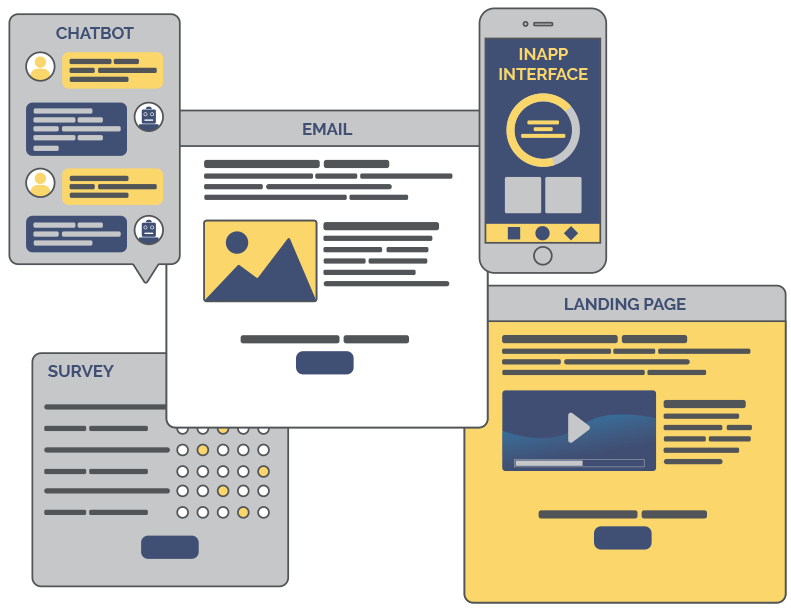Most early-stage companies are struggling with finding their marketing and sales model. A lot of knowledge is available online, however, it is easy to get lost in the jungle of software tools, how-to guides, and best practice blogs.
For most growth companies the sales and marketing efforts are purely experimental and they have no track record of what’s worked before. Simply because the product and market never existed before.
At Coupler we help companies run structured experiments to find their optimal business model faster. We work with a range of different tried and tested concepts, such as performance marketing, inbound marketing, content marketing and growth hacking, however, what really sticks out as the most effective initiative for early-stage companies is “outbound sales campaigns”.
This article will give you some input on how to establish and run an automated (to an extent) outbound sales campaign and we’ll also tell you what software and tools we use along the way.
Planning
Obviously, you need some kind of hypothesis on who your most likely buyers are. If possible you can create an ideal customer profile (ICP) from looking at your existing customers (acquired through network sales and good old hustling). You can read more about ICPs on our friends at Vainu’s blog: https://blog.vainu.io/ideal-customer-profile
At Coupler we do a lot of Value Proposition Design (VPD) workshops to identify your most likely buyers in theory, but with a methodic approach. This framework was put forward by Strategyzer, and you can watch a video about it here: https://www.strategyzer.com/canvas/value-proposition-canvas
To put it short, you should know what segments you’ll be targeting (e.g. banks, personal transportation companies or concert venues, etc.), which roles within the company your product or service is relevant for, what job you’ll help them do and which pains you remove or which gains you create.
You can read more about the theory behind this in the book “Competing Against Luck”, by Clayton M. Christensen
This will give you a great basis for creating value propositions that will be noticed and embraced by your potential users.
Target Audiences
After defining who you can help with what, you need to gather a list of people who meets your description. There are several ways of doing this.
- You can use directories such as 1881.no (Yellowpages) to identify companies and then go on to their websites to find specific roles and names
- You can use social networks such as LinkedIn or Facebook to find profiles that are relevant
- You can use tools such as Vainu.com to do the above more efficiently, or
- Yo can run paid ads campaigns to harvest email addresses
At Coupler we usually help our clients with the latter, running targeted ads campaigns on social media or through programmatic ad platforms, and offer something of value to the audience in exchange for their email address.
Facebook is actually the champion channel for this, utilizing their vast social graph, their algorithms and simple-to-use management platform; Facebook Business Manager.
We use tools like leadpages.io or BeaverBuilder to create squeeze pages and ActiveCampaign to collect emails (through forms) and build lists.
Low hanging fruits
In any market there will always be one fraction that is more inclined to buy your product than the other. Usually this fraction is small as most people tend to be satisfied with the status quo. However, this fraction is crucial to your growth as they’re the ones that eventually will convince the mass market about the value of your product. Therefore it is adamant to your success that you identify these individuals and put most of your efforts into getting them on board first. Adding lead scoring to your outbound campaign setup will help you focus on the lowest hanging fruits.
Lead scoring is an individual exercise for each company. There is no one-size-fits-all system. Who is a perfect lead is determined on what you sell and how you sell it. However, there is quite a big common ground on how to approach this.
Generally speaking lead scoring is about figuring out who is most likely to buy your product and then establishing a system to recognise them.
In theory you create a matrix with "engagement" on one axis and "fit" on the other axis. This can be translated into "behavior" for engagement and "demographic" for fit. Points will be added along both axises and once an individual’s points summarize to a score above the threshold it should trigger some kind of sales activity.
Points for demography are usually added in the pre qualification of leads and behaviour points are added as the campaign is running and people are interacting with you.
Flow complexity
After determining who to target and setting up a system for approaching them there are still some nifty tricks to improve the effect of your campaign. There is always a tradeoff between simplicity and complexity (efficiency vs. effectiveness), however, some kind of segmentation and personalisation of all the communication bits along your funnel should prove to be worth the effort.
Segmentation is usually based on data enrichment and insight about the individual person in your flow and gives you the opportunity to send more personalised messages to your leads. Simple segmentation can be done by using fairly open data about your audience, like geolocation, company size or gender. More advanced segmentation, e.g. budget size, other decision makers and timeframes, can be applied to your leads as they move through your funnel and give you more information about themselves.
A great tool for fairly advanced users is Segment.
Launching the campaign
As you probably know, or at least suspect after reading this, these campaigns are not about reaching out to new leads one time only or about just running ads. It’s about starting a dialogue with individual people and nurturing their initial interest in your company. You should plan your campaign as a sequence of communications, preferably in a dialogue. Hence, it is important that you check the performance of all bits and pieces as they move along and optimize accordingly.
If the ads don’t perform; change them or change the audience, or even the frequency of the exposures (most ad campaigns fail because the number of exposures to each individual is too low). If you don’t get an adequate opening rate on your emails; change the subject line, the sender name or even the time of day they are sent. If you don’t get any click-throughs from your emails; change the content of the email or the CTA. And so on and so on.
One final advice is to be patient and don’t give up. No outbound campaign is successful from the get-go and you should expect to do quite a lot of optimizing before reaching the CAC or CPA you want. However, once you get there a ton of new business awaits you!





